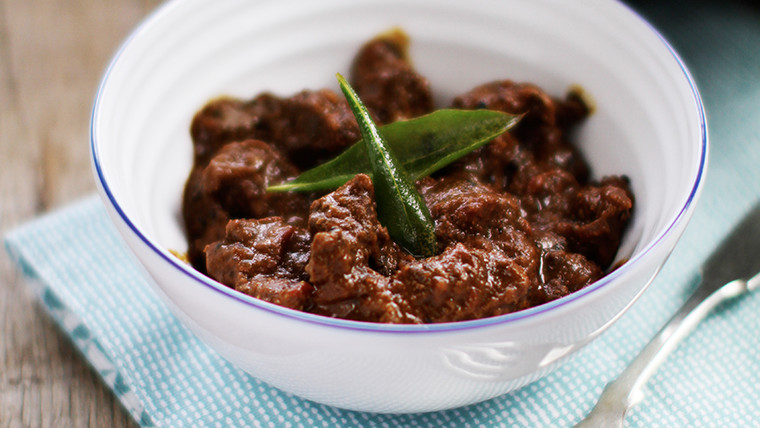Madras
I love a madras because you get to play with lots of spices and it tastes amazing too. The key features of a madras are that it hot and fiery with a piquant flavour. It has a wonderful vibrant deep reddy brown colour which is achieved from chilli powder (or paprika for a milder flavour), the tart tanginess from fresh tamarind, and it’s very slight aniseed fragrance from using of fennel seeds is key. The main spices are usually ground to create a wonderfully aromatic powder to which turmeric and chilli powders are added.
The dish is then put together using gorgeous south Indian spices - mustard seeds and curry leaves are tempered in oil and then the onions are cooked to a deep dark brown colour to give real depth to the sauce. Tomatoes and tamarind are added for the rich gravy and to give a real tart flavour. Sometimes coconut or yoghurt are used to give a little smooth, creaminess too.
History of a Madras
The flavours of this dish are overwhelmingly south India but the name is very much an English restaurant invention and ‘Madras curry’ is not used in India. English merchants found that the city of Madras (now known as Chenni) to be a hot, dry region which seemed to illustrate this style of curry perfectly. It also helped early restaurateurs build a curry scale that’s used across curry houses to help customers understand the heat level of the dishes on the menu. It’s completely made up because the level of heat or chillies in the dish doesn’t define Indian food. However, today when you go for a ’curry’ everyone knows that a korma is sweet and mild and a phall is fiery and hot and the Madras sits towards the hotter end.
Being a dish of Hindu origin in India it’s usually prepared as a vegetable dish however, in UK curry houses it’s usually cooked with lamb or beef and this makes the dish creamy which means there no need to add yoghurt or coconut.
My recipe
I like to make up a Madras powder with lots of wholes spices that are all ground up so the powder is really fragrant. This is then embellished with turmeric and chilli to give the correct colour and the meat is then marinated with it to infuse all the aromas of the spices. As soon as these hit the pan they release their oils and start to infuse into the meat. If you are using meat then ideally this should be a really slow cooked dish to give the fenugreek seeds time to lose their overly bitter flavour and allow the dish to pick up all the complex flavours of the spices. Here's my delicious Madras recipe.


Carol
reply